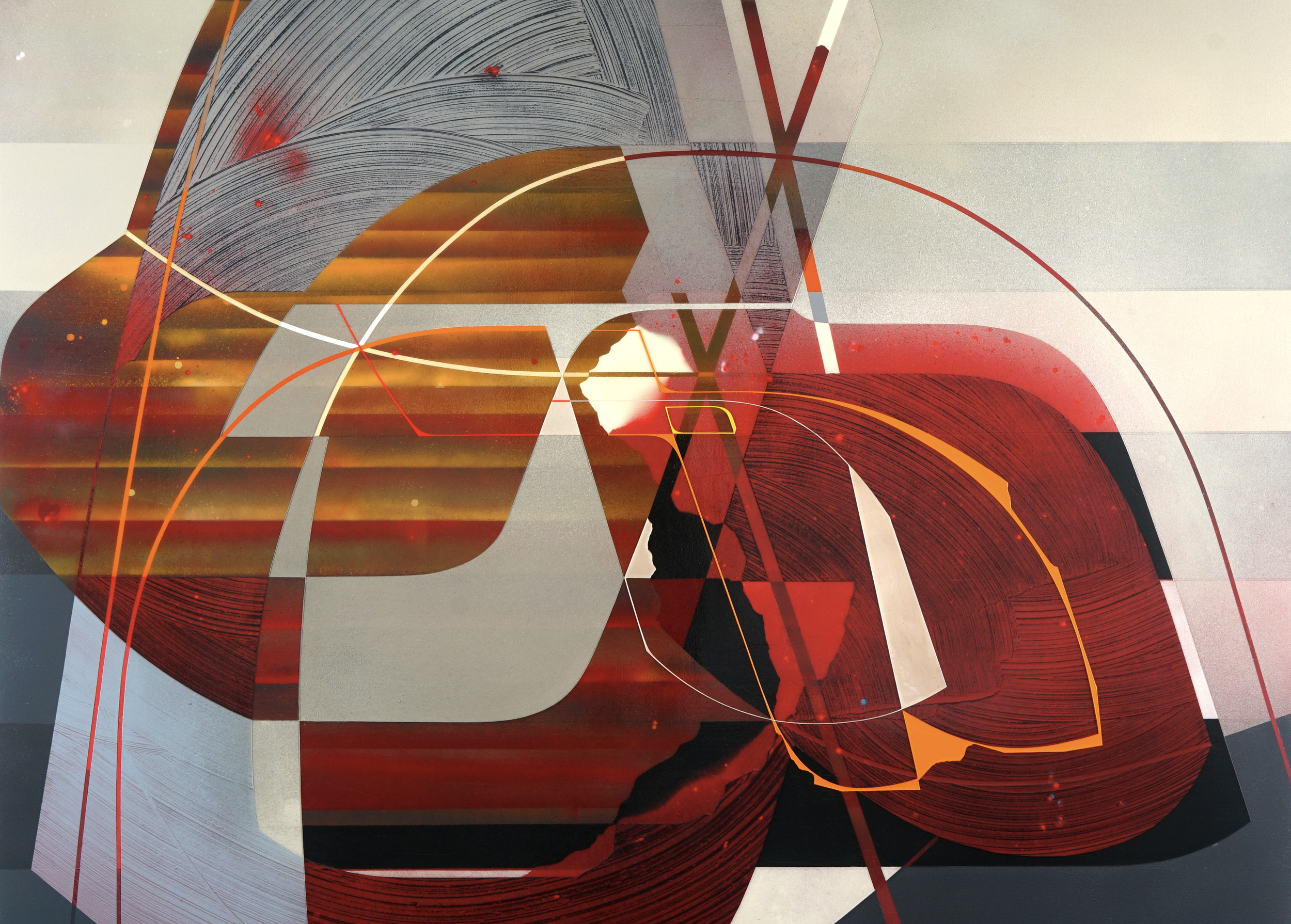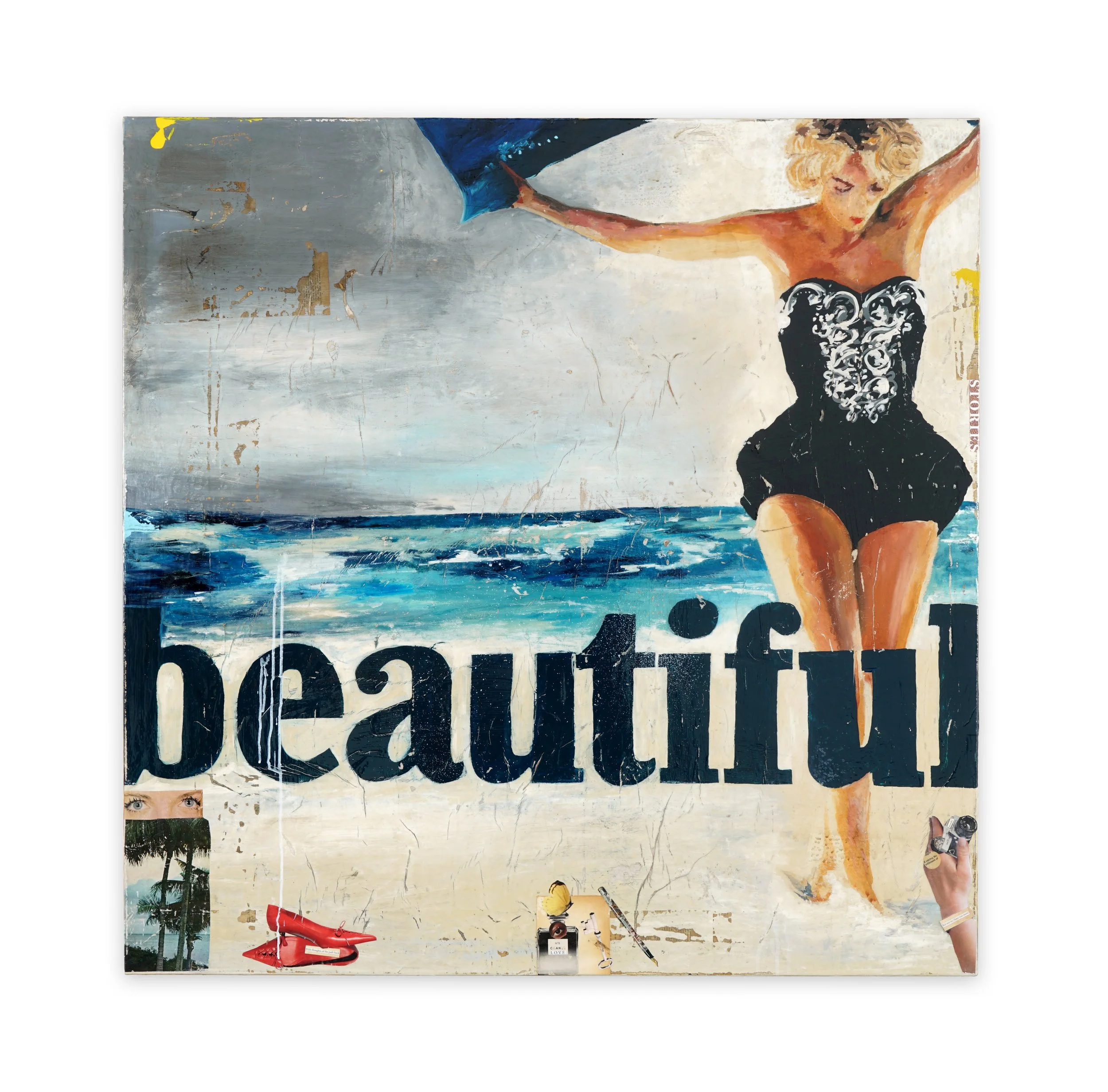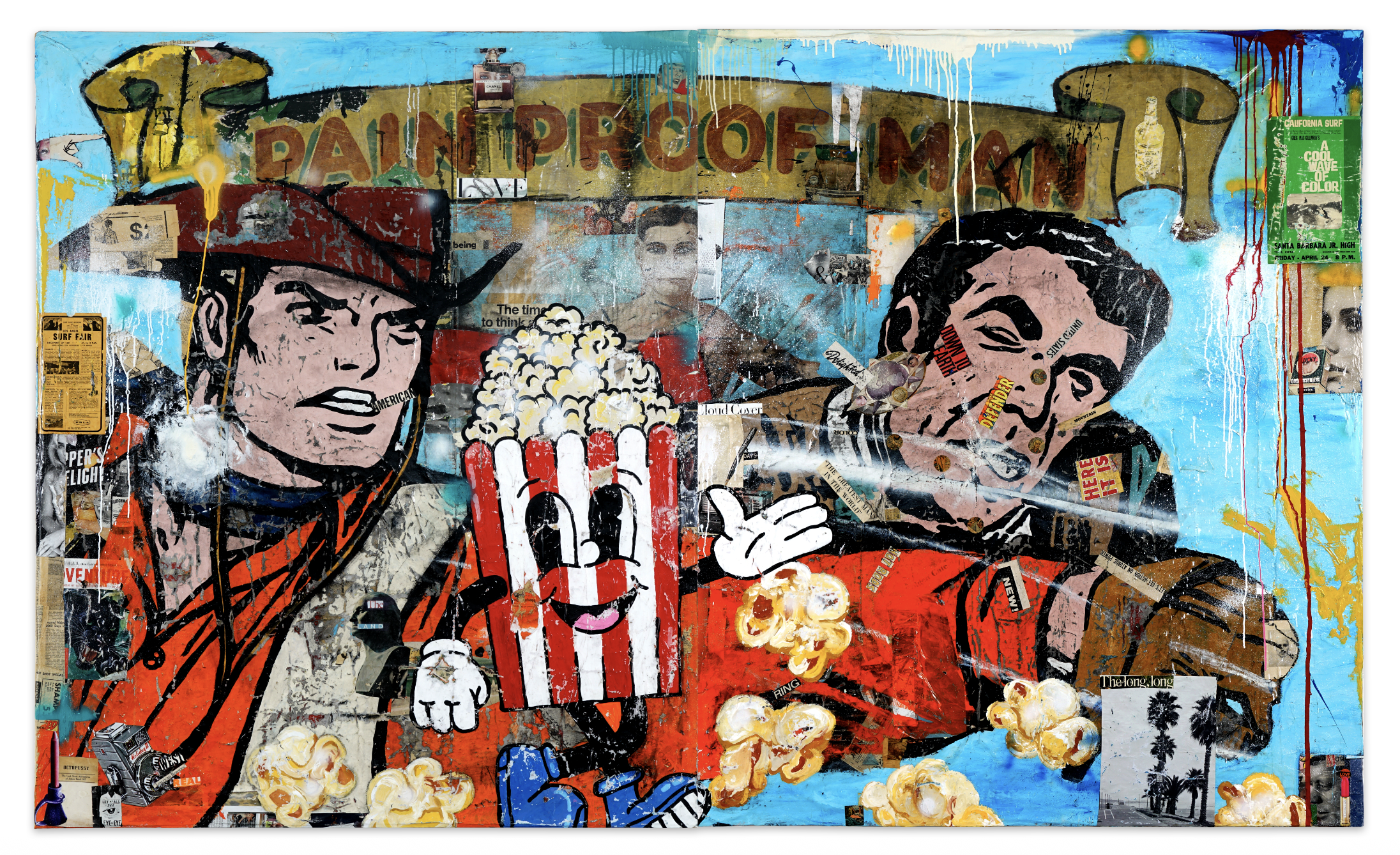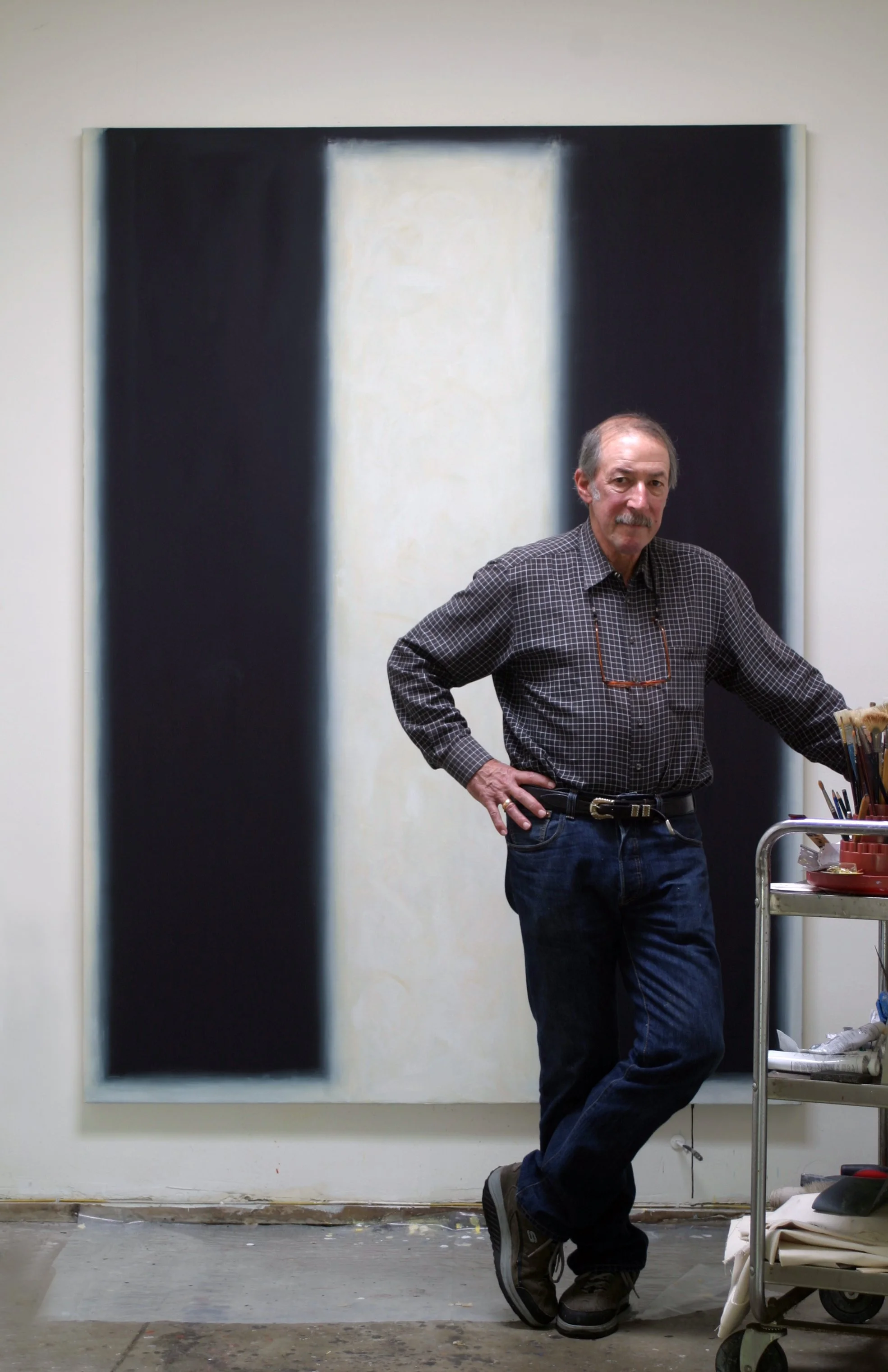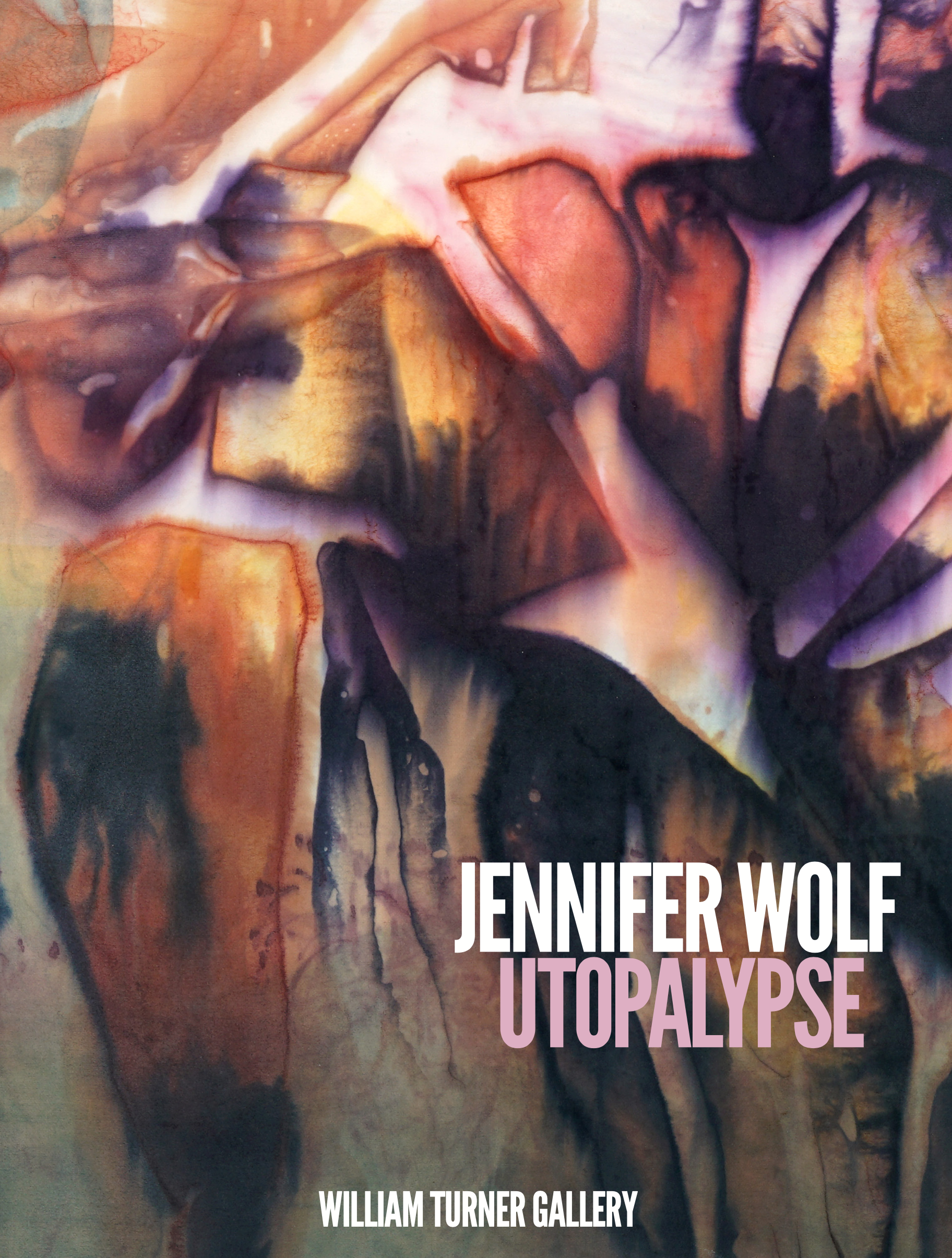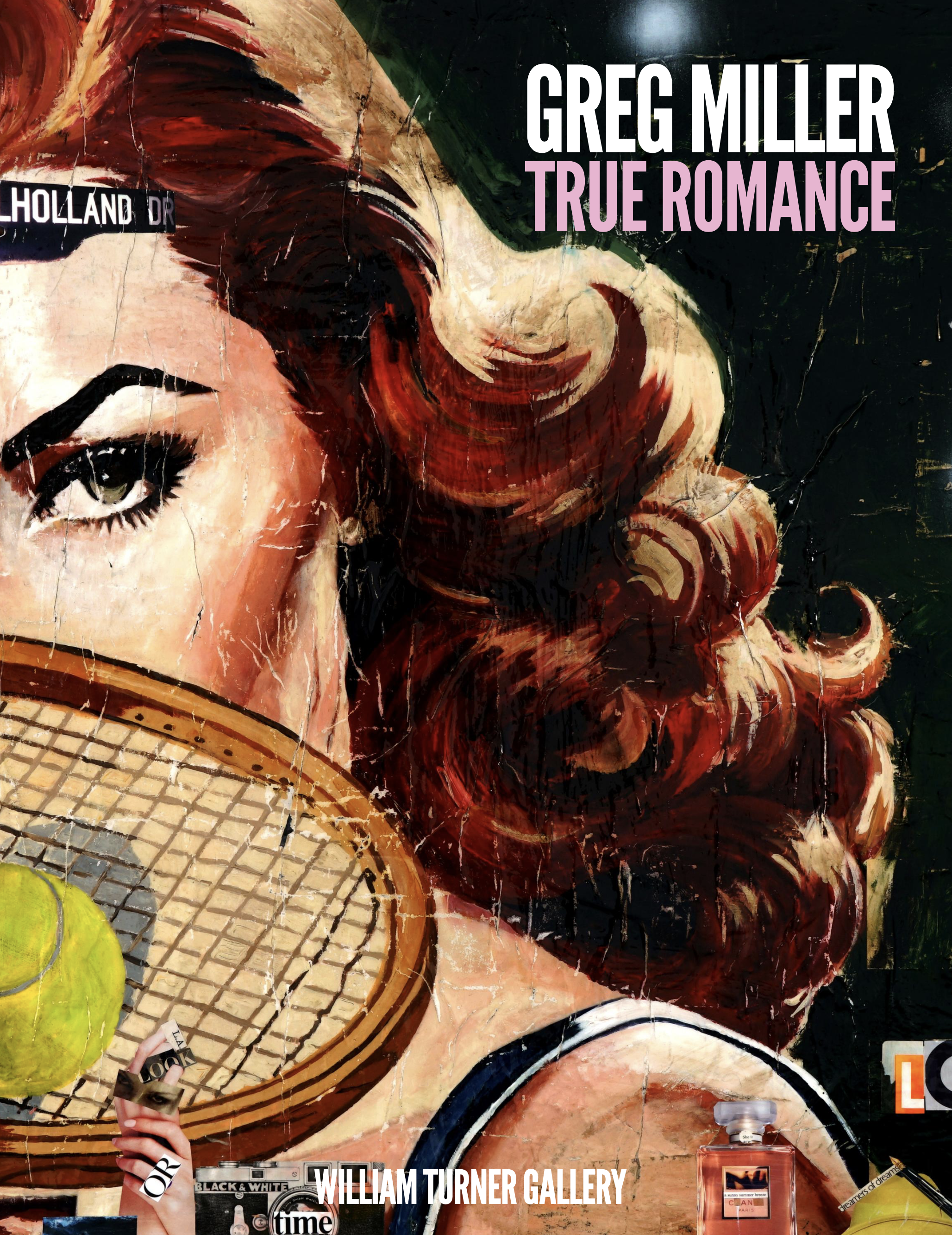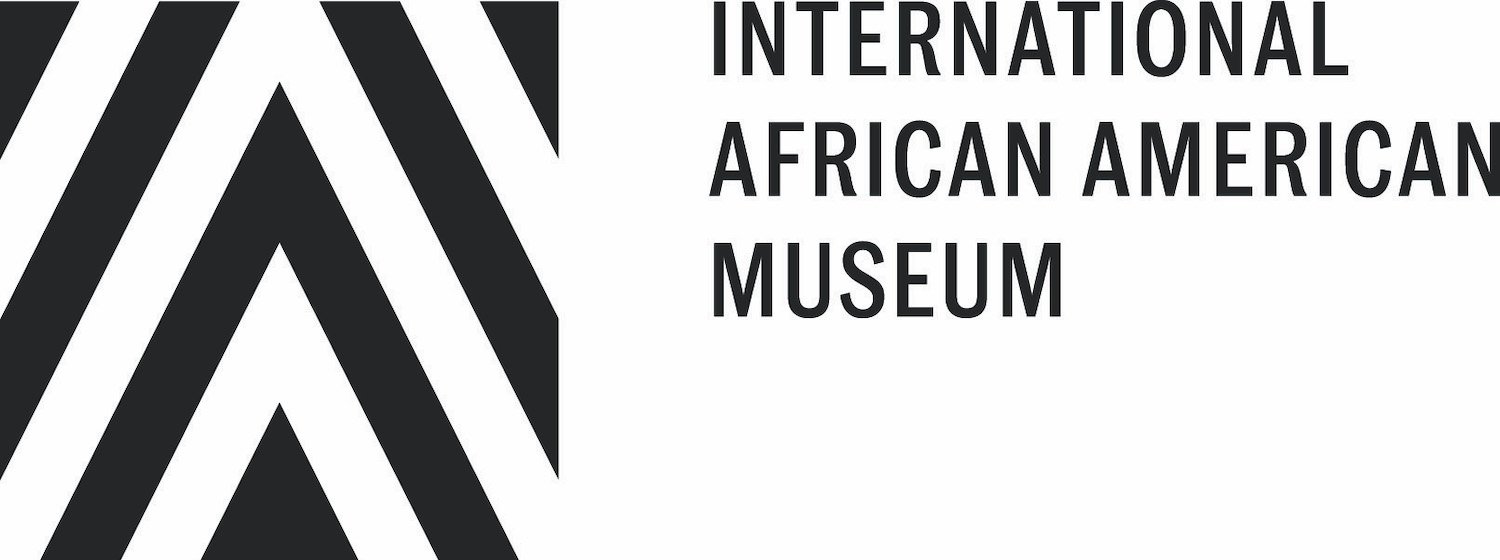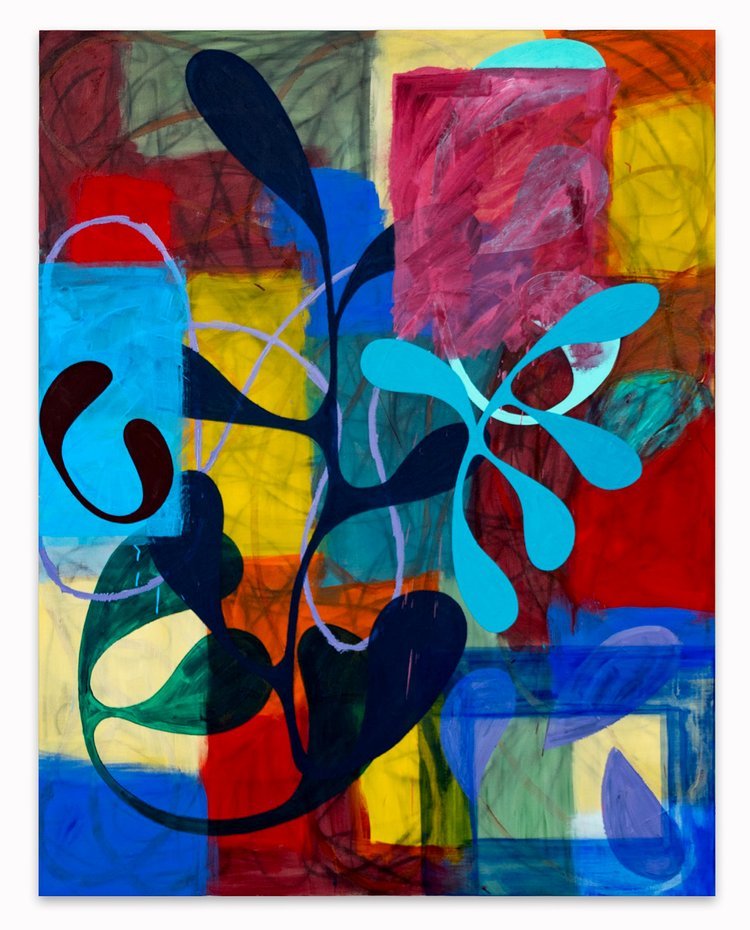Jody Zellen Reviews Greg Miller: True Romance
/Greg Miller: ‘True Romance’
Graphically and Intellectually Complex Puzzles
by Jody Zellen
Greg Miller’s works are filled with images appropriated from the mass media that appear to be chaotically combined to create messy surfaces with painted drips and ripped newspaper fragments. Each melange is encapsulated in varnish or a glossy medium that unifies the disjointed surface. Many of his works allude to Hollywood movies and movie stars. The paintings have a nostalgic aura, yet are clearly created in the present. Scenes suggesting love, desire and loss, as well as dramatic comic book fist fights fill his colorful panels. Large painted figures are combined with actual magazine excerpts to create narratives. Like other accomplished collage artists, Miller’s refined skills at unifying disparate and unrelated content are clearly evident. He also has a keen wit and sense of humor.
Greg Miller, Beautiful, Acrylic and collage on canvas, 48” x 48”
Many recognizable figures from the past and present fill his canvases: be it Mr. Bubble, The Jolly Green Giant (the well-known advertising mascot for the Green Giant brand of peas), vintage macho comic strip detectives and cowboys, or seductive, smiling women with bright red-lipstick. Miller also inserts book covers, maps and street signs (Mulholland Drive), as well as reproductions of Life Saver candies and pieces of popcorn. Significant scale shifts create an interesting back and forth between the painting and collage. Recognition plays a large part in how Miller’s works are interpreted. For those who know the original context of his appropriated materials, the references are automatic and embedded in nostalgia. Those who don’t, might need to delve deeper into the history of popular culture, but all can applaud Miller’s inventive ways of presenting them in new scenarios and combinations.
Greg Miller, Mr Bubble, Acrylic and collage on canvas, 36” x 72”
Many of Miller’s large-scale horizontal paintings allude to widescreen proportions connecting them to the world of cinema. Love Between Hard Covers (all works 2025) and Mr. Bubble are diptychs that are twice as wide as they are high. Centered in the large, bright and aggressively gestural two panel piece, Here it is, is an illustration of a red and white striped popcorn bag character adorned with gesturing arms and legs. This iconic figure waves as it saunters across the composition. Filling the background is a stylized fist fight between two cartoon characters. As one appears to hit the other, all that is missing is the word WHAAM![aka Roy Lichtenstein, though it appears in another painting so titled and installed across the wall]. Giant pieces of popcorn float across the scene. A banner reading Pain Proof Man sits at the top of the picture. Scattered about the composition are full-size magazine and book pages that also wrap around the edges of the panel. Within the composition are carefully chosen clippings with words or sentences that inform the reading of the densely layered work. It is necessary to read the fine print, as well as follow the flow of the images to fully understand Miller’s intentions.
In the diptych Mr. Bubble, Miller juxtaposes a painting of a woman in a red bathing suit floating in dark blue water with a painted replica of a Mr. Bubble box. The woman appears to be just below the surface, her face obscured by the water above. The illustration of a box of 1970s vintage bubble bath is presented alongside a historical advertisement for the “1st National Surf Show,” a clipping of an old 35-mm camera, magazine cutouts of purple flowers, a bird and a compass. Newspaper fragments are scattered across the piece. Depending on the order in which they are read — ‘Know Something’ ‘five’ ‘beauty’ — they cohere poetically.
Greg Miller, Whamm, Acrylic and collage on canvas, 60” x 84”
In the large piece Whaam, Miller features a cropped close-up of a glamorous woman’s face presumably from a 1950s era advertisement and a hand pinching a red Life Saver candy. Other painted Life Saver candies in yellow, orange and green appear behind the hand, each collaged with letters that spell out words including LIFE, FREE, PLAY or REAL THING. The word WHAAM! is painted in bright yellow and outlined in black in the background amidst an explosion. Covering these painted elements are cutouts of liquor bottles, a camera, the American flag, as well as a tree labeled “High Sierra.” When combined with painted drips and newspaper fragments — Miller’s signature style — these elements create a nuanced narrative that weaves through different generations of popular culture.
Greg Miller, Here It Is, Acrylic and collage on canvas, 72” x 120”
In Beautiful, the word spans edge to edge horizontally. Behind it is a beach scene with a woman in an old-fashioned bathing suit. A pair of red high heel shoes is collaged toward the bottom left covered by a small line of text that reads “With thoughts of the path back.” A collaged hand holds a camera and is overlaid with texts that state “But not so; there was more” and “…if sensing the wilderness of …” A pair of disembodied eyes looks out at the viewer. The scene is beautiful and charged simultaneously. Miller is clearly infatuated and seduced by advertisements and printed ephemera from the past. He carefully selects and arranges aspects from what must be a huge archive of materials, to create graphically and intellectually complex puzzles that are a joy to read and decipher.
Jody Zellen is a Santa Monica-based artist and writer. She has been writing art reviews for more than 25 years and currently contributes to Artillery, ArtScene, Afterimage and Art and Cake. For more information on her art and writings please visit www.jodyzellen.com

